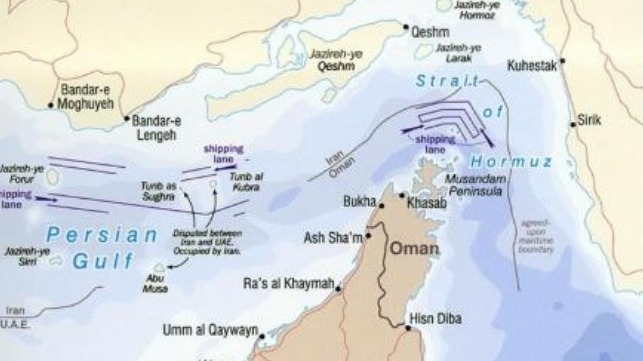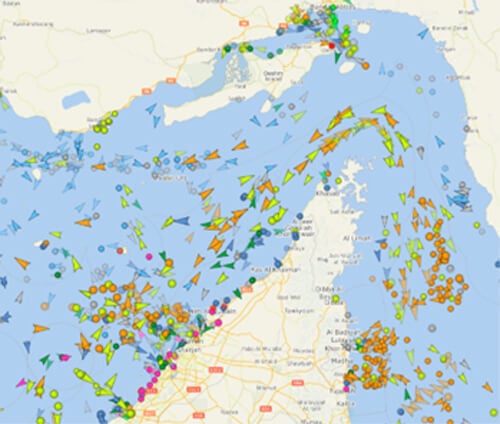Vessels Now Keeping to Omani Waters in Strait of Hormuz Traffic Scheme

Traffic entering and leaving the Arabian Gulf through the Straits of Hormuz stick to well-established sea lanes recognized by the UN’s International Maritime Organization. At the narrowest point, both the northern/inward channel and the southern/outwards channel lie in Omani waters, both before and after this choke point the sea lanes historically have crossed into Iranian territory. The plot of the sea lanes is primarily designed for times of peace and stability, with optimal channels minimizing passage times and fuel costs. Much of the Omani diplomatic effort directed at Iran is based on the need for these two countries to agree to the unfettered operation of the Traffic Separation Scheme - for the benefit of both parties and the international community.
A review of ship movements in the strait on June 19, repeated today on June 20, shows that shipping is now avoiding Iranian territorial waters in the approaches, in the strait itself and then further into the Gulf, where standard routing previously was largely through Iranian waters.
Routes now being used fall within international waters in the Gulf of Oman approaches. Within the Straits, ships appear to be keeping further south and wholly in Omani waters, in the northern/inward channel - previous routing used to edge Iranian territorial waters. Once in the Gulf, all vessels are keeping close to the Ras Al Khaimah coast, within Emirati territorial waters, save those heading for Iranian ports. Crowding so much traffic into narrower sea lanes inevitably increases the risk of collisions.

Ships in the Straits of Hormuz identified by vesselfinder.com
For Oman, keeping traffic flowing through the Straits is a heavy responsibility, which will be stretching the Royal Navy of Oman to its limits. Oman well understands the types of both declared and ‘unattributable’ attacks that shipping has suffered in the past. Ships can be attacked by drone, boarded from small boats, subject to both sea floor mines and limpet attacks - where there can be difficulties in attribution. Ships can also be subject to deadly direct attacks from naval gunfire, submarines, and anti-shipping cruise missiles - with which the regular Iranian Navy (Nedaja) and the IRGC Navy (Nedsa) are both well-equipped. The biggest danger is that a hothead Nedsa commander will take matters into his own hands, and attack without orders.
Oman will no doubt be stressing to Iran, with whom it keeps open channels of communication, that any Iranian violation of Omani territorial integrity would force a re-think of relations between the two countries. With at least three Iranian aircraft seen flying into Muscat in recent days, presumably in connection with stalled US-Iranian negotiations which Oman has been mediating, keeping Oman open as a conduit through which to communicate ought to be considered a high priority for those in Iran interested in a negotiated end to the conflict.

Goat Island
Anxious to remain neutral so as to protect its mediating role, Oman has made no mention of shifts in traffic in the Straits of Hormuz. Nor has it made mention of any naval movements to bolster its coverage of the Straits. Nonetheless, silence does not indicate any lessening of determination to protect Omani sovereignty. The Omani Navy has a tight oversight of the maritime picture in the area through radar pickets on outlying outcrops within its territorial waters, and from vessels operating out of its Goat Island Naval Base on the Musandam Peninsula. It is likely also to have issued warnings to Iranian commanders via the channels established to coordinate search and rescue operations in the area.
